#giles foster
Text

I believe he took this picture when he filmed Dutchgirls(1985).
James Wilby as Philip Dundine in film, Dutchgirls(1985). "A lovely thing which was written by William Boyd, " says James, in his BFI interview "The Reflection on Maurice" , 2018.
#james wilby#1985#dutchgirls#Philip Dundine#my dream lover#Giles Foster#william boyd#BFI interview#Reflection on Maurice#2018#my
20 notes
·
View notes
Text

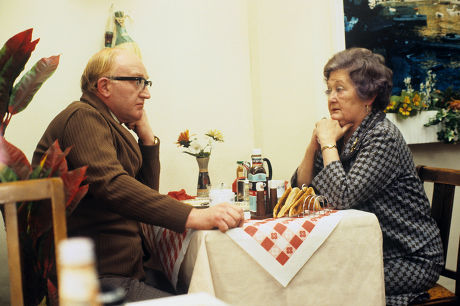


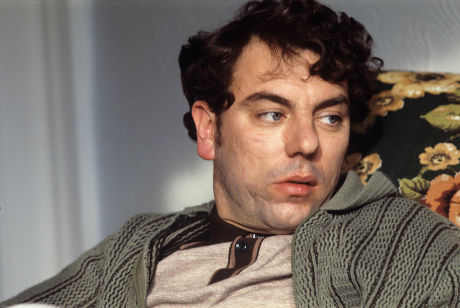
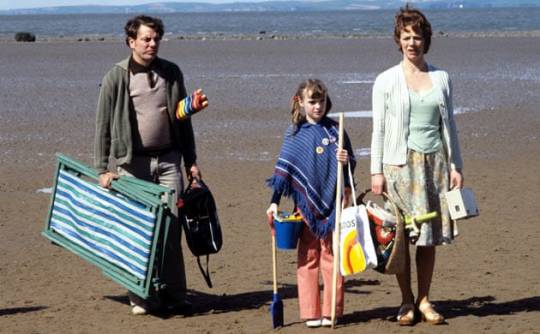
Six Plays by Alan Bennett: All Day on the Sands (1.6, LWT, 1979)
"Look at the level of that sauce. Only started yesterday, it's gone down dramatically. I'm under no compulsion to provide sauce. Lathering it on. It's not as if my cooking needed sauce!"
"Make it available on request. Sauce available on request, that'll bring them to a sense of responsibility."
"Wouldn't care, but they go at the salt and pepper like lunatics. You'd think they'd never seen a cruet in their lives."
#six plays by alan bennett#all day on the sands#alan bennett#giles foster#1979#single play#marjorie yates#alun armstrong#gary carp#susan hopkins#jane freeman#ken jones#helene palmer#lynne carol#clifford kershaw#harry markham#albert modley#rosalind wilson#jonathan coy#stephen greenwood#bert gaunt#elizabeth dawn#having pushed the envelope a little at times‚ this series ends on a safer note with a classic Bennett piece about holidaymakers and wryly#observed class and relationship inspired dialogue. it's also for my money perhaps the weakest of the six plays; it has some brilliantly#sharp lines and scenes in true Bennett fashion but the overall play is just a little... aimless. a meandering look at a family on holiday#as Alun Armstrong's father figure struggles with being newly unemployed and Marjorie Yates as his wife variously supports‚ cajoles‚ and#picks at him. at the centre are their two children‚ but particularly their son‚ whose misadventures we follow as he attempts to retrieve a#lost sandal. it's fine enough but it doesn't really go anywhere‚ and it hasn't the bite nor the impact that the others in this strand had#i think partly as well that lies with Giles Foster's direction‚ which hasn't the spark or creativity of Lindsay Anderson‚ nor the fluidity#or careful precision of Stephen Frears (who helmed 4 of the 6 plays and acted as producer). still‚ despite my griping‚ not a bad piece
2 notes
·
View notes
Text
"Oliver's Travels" (1995)




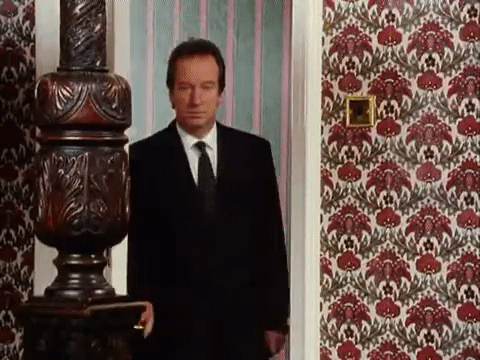





Films and series I've watched in 2023 (9/?)
Full series (5 episodes. The picture quality isn't the best but if you can get past that it's very well worth a watch):
#series watched in 2023#Oliver's Travels#Alan Bates#Sinéad Cusack#Bill Paterson#Giles Foster#Alan Plater#light noir#miniseries#crime
6 notes
·
View notes
Text
"SILAS MARNER" (1985) Review

"SILAS MARNER" (1985) Review
I have seen a handful of television and movie adaptations of novels written by George Eliot. But the very first adaptation I ever saw was "SILAS MARNER", the 1985 version of Eliot's third novel published back in 1861. My recent viewing of the production led me to reassess it.
"SILAS MARNER" begins with an English weaver living with a small Calvinist congregation in Lantern Yard, a slum street in a Northern England city. His life falls apart when he is framed for stealing the church's funds, while watching over the congregation's ill deacon. Worse, his fiancee leaves him for his so-called best friend, the very man who may have framed him. Shattered and embittered, Silas leaves Lantern Yard and arrives at a rural village in the Midlands called Raveloe. Although he resumes his trade as a weaver, Silas' traumatized past leads him to achieve a reputation as a miser and a loner in the community.
Silas' move to Raveloe eventually leads him to cross paths with the community's leading citizens, the Cass family. The head of the latter is the elderly Squire Cass who has two sons - Godfrey and Dunstan. Godfrey, who is the squire's heir is secretly married to one Molly Farren, a lower-class woman and opium addict from another town, who has given birth to his young daughter. Godfrey is also engaged to a young middle-class woman named Nancy Lammeter. Dunstan is a dissolute wastrel who constantly loses money via excessive gambling. One night, a drunken Dunstan breaks into Silas' cottage, steals the gold coins that the latter has been hoarding and disappears. Through a series of events, Molly plots to expose her marriage to Godfrey and their child during the Cass family's New Year party, but dies in the snow before she can reach it. Silas, who is emotionally upset over the loss of his coins, finds both the dead Molly and the child. Although he informs the partygoers of Molly's death and the child, he assumes guardianship of the latter (renamed Hephzibah "Eppie"), much to the relief of Godfrey, who can now legally marry Nancy. All goes well until Godfrey and Nancy's failure to have children threaten Silas' newfound happiness as Eppie's father years later.
What can I say about "SILAS MARNER"? I can honestly say that it was not one of the best adaptations of a George Eliot novel. Then again, I do not consider the 1861 novel to be one of her best works. I realized that Eliot had set the story either around the end of the 18th century or around the beginning of the 19th century. It was her prerogative. But both the novel and the movie seemed to reek of Victorian melodrama that I found myself feeling that Eliot or any adaptation could have set the story around the time it was originally written and published - the mid 19th century. The story is, at best, a good old-fashioned Victorian melodrama. I would never consider it as particularly original in compare to the likes of "MIDDLEMARCH" or "DANIEL DERONDA".
"SILAS MARNER" tries its best to be profound on the same level as the other two Eliot stories I had mentioned. But I had a few problems with the narrative. What was the point behind Dunstan Cass' disappearance and theft? Yes, he stole Silas' hard earned money before he disappeared. I got the feeling that the stolen coins seemed to serve as a prelude to Silas' emotional attachment to Eppie. But why have Dunstan take it? How else did his disappearance serve the story . . . even after his dead remains were found close by, years later? In Eliot's novel, the discovery of Dunstan led brother Godfrey to form a guilty conscience over his own secret regarding young Eppie and confess to his wife. But in the movie, it was Godfrey and Nancy's inability to conceive a child that seemed to finally force the former to confess. Unless my memories have played me wrong. Frankly, Dunstan struck me as a wasted character. Anyone else could have stolen Silas' money.
I also noticed that Giles Foster, who had served as both screenwriter and director for this production, left out a few things from Eliot's novel. I have never expect a movie or television to be an accurate adaptation of its literary source. But I wish Foster had shown how Eppie's presence in Silas' life had allowed him to socially connect with Raveloe's villagers. Eliot did this by allowing her to lead him outside, beyond the confines of his cottage. The only person with whom Silas managed to connect was neighbor Dolly Winthrop, who visited his cottage to deliver him food or give advice on how to raise Eppie. I also noticed that in the movie, Silas had never apologized to another villager named Jem Rodney for his false accusation of theft. And Jem had never demanded it. How odd. I also wish that Foster could have included the segment in which Silas had revisited his former neighborhood, Lantern Yard. In the novel, Silas' visit revealed how the neighborhood had transformed into a site for a factory and its citizens scattered to other parts. Silas' visit to his old neighborhood served as a reminder of how his life had improved in Raveloe and it is a pity that audiences never saw this on their television screens.
Yes, I have a few quibbles regarding "SILAS MARNER". But if I must be really honest, I still managed to enjoy it very much. Eliot had written a very emotional and poignant tale in which a lonely and embittered man finds a new lease on life through his connection with a child. Thanks to George Eliot's pen and Giles Foster's typewriter, this story was perfectly set up by showing how Silas Marner's life fell into a social and emotional nadir, thanks to the betrayal of a "friend" and the easily manipulated emotions of his neighbors.
Once Silas moved to Raveloe, the television movie did an excellent, if not perfect, job of conveying how he re-connected with the world. It was simply not a case of Silas stumbling across a foundling and taking her in. Even though he had formed a minor friendship with Mrs. Winthrop, having Eppie in his life managed to strengthen their friendship considerably. The movie's narrative also took its time in utilizing how the Cass family dynamics played such an important role in Silas' life in Raveloe. After all, Godfrey' secret marriage to Molly Farren brought Eppie into his life. And Dunstan's theft of his funds led Silas to re-direct his attention from his missing coins to the lost Eppie. And both Godfrey and Nancy Cass proved to be a threat to Silas and Eppie's future relationship.
The production values for "SILAS MARNER" proved to be solid. But if I must be honest, I did not find any of it - the cinematography, production designs and costume designs - particularly memorable. The performances in the movie was another matter. "SILAS MARNER" featured solid performances from the likes of Rosemary Martin, Jim Broadbent (before he became famous), Nick Brimble, Frederick Treves, Donald Eccles, Rosemary Greenwood; and even Elizabeth Hoyle and Melinda White who were both charming as younger versions of Eppie Marner.
Angela Pleasence certainly gave a memorable performance as Eppie's drug addicted mother, Molly Farren. Patsy Kensit not only gave a charming performance as the adolescent Eppie, I thought she was excellent in one particular scene in which Eppie emotionally found herself torn between Silas and the Casses. Freddie Jones gave his usual competent performance as the emotional Squire Cass, father of both Godfrey and Dunstan. I was especially impressed by Jonathan Coy's portrayal of the dissolute Dunstan Cass. In fact, I was so impressed that it seemed a pity that his character was only seen in the movie's first half.
I initially found the portrayal of Nancy Lammeter Cass rather limited, thanks to Eliot's novel and Foster's screenplay. Fortunately, Nancy became more of a central character in the film's second half and Jenny Agutter did a skillful job in conveying Nancy's growing despair of her inability to have children and her desperation to adopt Eppie. I thought Patrick Ryecart gave one of the two best performances in "SILAS MARNER". He did an excellent job of conveying Godfrey Cass' moral ambiguity - his secrecy over his marriage to Molly Farren, the passive-aggressive manner in which he "took care" of Eppie through Silas and his willingness to use Eppie as a substitute for his and Nancy's failure to have children. Ryecart made it clear that Godfrey was basically a decent man . . . decent, but flawed. The other best performance in "SILAS MARNER" came from leading man Ben Kingsley, who portrayed the title character. Kingsley did a superb job of conveying Silas' emotional journey. And it was quite a journey - from the self-satisfied weaver who found himself shunned from one community, to the embittered man who stayed away from his new neighbors, to a man experiencing the joys and fears of fatherhood for the first time, and finally the loving man who had finally learned to re-connect with others.
Overall, "SILAS MARNER" is more than a solid adaptation of George Eliot's novel. I did not find its production designs particularly overwhelming. I did enjoy Eliot's narrative, along with Giles Foster's adaptation rather enjoyable . . . if not perfect. But I cannot deny that what really made this movie work for me were the first-rate performances from a cast led by the always talented Ben Kingsley. Victorian melodrama or not, I can honestly say that I have yet to grow weary of "SILAS MARNER".
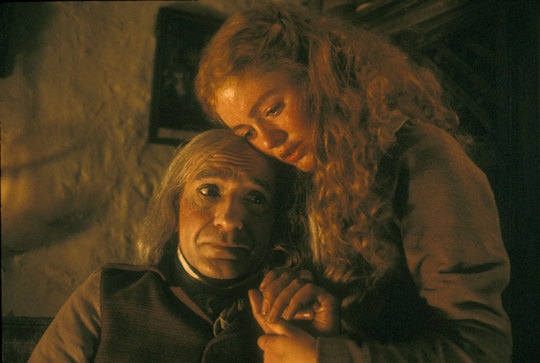
#george eliot#silas marner#silas marner 1985#ben kingsley#angela pleasence#donald eccles#freddie jones#jenny agutter#jonathan coy#jim broadbent#nick brimble#patsy kensit#patrick ryecart#giles foster#elizabeth hoyle#melinda whiting#rosemary martin#robert putt#frederick treves#rosamund greenwood#period drama#period dramas#costume drama
0 notes
Text
“Cannibal chocolates”: CONSUMING PASSIONS (Giles Foster, 1988)
Consuming Passions is a black-comedy film directed by Giles Foster (Hotel du Lac). The film is based on the stage play Secrets by two of the Monty Python greats, Michael Palin and Terry Jones, which was filmed and shown on the BBC in 1973.
This is what I call entrepreneurial cannibalism, with a subgroup of accidental or fortuitous circumstances. A chocolate factory is preparing to launch a new…

View On WordPress
#annie potts#cannibalism#capitalism#chocolate#consuming passions#entrepreneurial#giles foster#michael palin#nancy fraser#neo-liberalism#ouroboros#pigs#prunella scales#Secrets#terry jones
0 notes
Text


My dog is snoopy. Btw those plastic kid chairs my mom put there are supposed to prevent him from lying on the futon. Welp.
Also Harry is 3 years old today!
Happy Birthday, Harry!!! 🎉🎊🥳🎈
#Harry the dog#foster kittens#lab mix#dog#dogs of tumblr#dogs of the internet#happy birthday#giles the cat#cameo
12 notes
·
View notes
Text

weird white dude alignment chart
i don’t know what this trope is so for now i’m just calling it “you wouldn’t hit a guy with glasses, because he’d kill you”
#digital art#digital painting#fanart#re-animator#gargoyles#disney gargoyles#metalocalypse#buffy the vampire slayer#herbert west#owen burnett#charles offdensen#charles foster offdensen#rupert giles
101 notes
·
View notes
Text
Giles watching the kittens play. He doesn't like being jumped on but he loves to watch them do their thing.
22 notes
·
View notes
Text
I like to think that Giles slipped the yearbook staff a picture of Buffy bc she admits to him she’s upset she missed picture day for the senior yearbook. Like not only does she get to be in the yearbook after all, she also gets to have a special personalized photo (idk how/why giles finds it, okay? Maybe he comes up with some really weak Watcher excuse and buffy is like “okay :)”) when everyone else has a standard picture day photo 🥺
#btvs#buffy the vampire slayer#btvs headcanon#Rupert giles#buffy summers#listen. listen. giles fostering and supporting the buffy side of her as well as the slayer side of her OKAY#can you guys tell I’m rewatching s3 I feel like I keep posting about it lmao
104 notes
·
View notes
Text
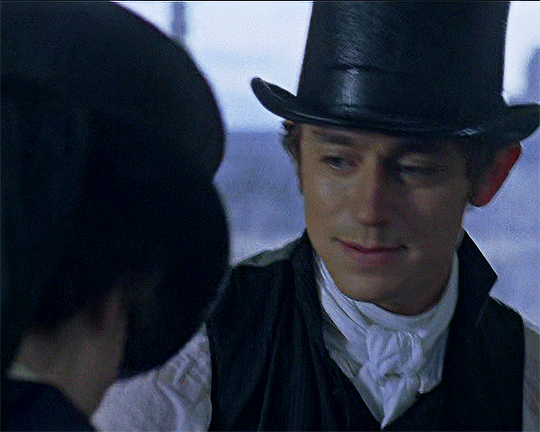


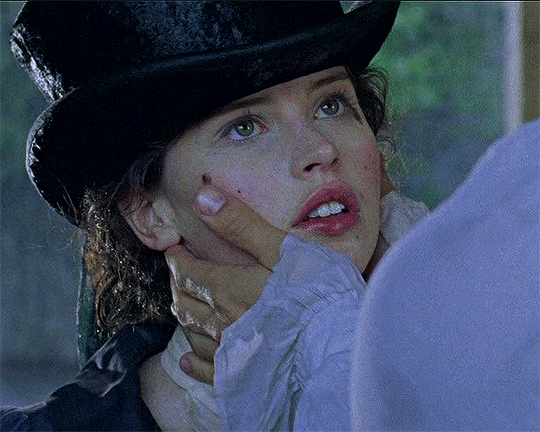
Northanger Abbey (2007) dir. Jon Jones, Giles Foster
#catherine morland#henry tilney#northanger abbey#perioddramaedit#periodedit#periodgif#filmedit#tvedit#austenedit#filmgifs#moviegifs#perioddramasource#onlyperioddramas#userbennet#catalinabaylors#tuserbea#userpavlova#userperioddrama#usermooyn#cami.gif#idk how to feel about this colouring tbh
818 notes
·
View notes
Text






James Wilby as Philip Dundine in film, Dutchgirls(1985). "A lovely thing which was written by William Boyd, " says James, in his BFI interview "The Reflection on Maurice" , 2018.
26 notes
·
View notes
Text
Hi, Salem Massachusets is a really fun place to visit, but while you’re listening to the accordion-playing werewolf and eating your caramel apple, please also remember the names of the people who died there in 1692-3, most of whom were executed by a corrupt justice system for a crime that didn’t actually exist:
Bridget Bishop
George Burroughs
Martha Carrier
Giles Corey
Martha Corey
Lydia Dustin
Mary Eastey
Ann Foster
Sarah Good
Unnamed infant of Sarah Good
Elizabeth Howe
George Jacobs
Susannah Martin
Rebecca Nurse
Sarah Osborne
Alice Parker
Mary Parker
John Proctor
Ann Pudeator
Wilmot Redd
Margaret Scott
Roger Toothaker
Samuel Wardwell
Sarah Wildes
John Willard
There are two memorials in town, one at the Charter Street cemetery, and the other at the site of the executions on Pope Street. Please visit them.
2K notes
·
View notes
Photo

Aethelred, Lord of the Mercians
Aethelred ruled as Lord of the Mercians from c. 881 to 911 and was a key military leader in the fight against Viking conquest and settlement in England. To defend Mercia, he allied himself to the powerful Kingdom of Wessex under the leadership of Alfred the Great (r. 871-899) and later married Alfred's daughter, Aethelflaed, to strengthen their alliance.
Today, Aethelred is primarily remembered as King Alfred's dutiful son-in-law or as the husband of the celebrated Aethelflaed, Lady of the Mercians. However, he was an important historical figure in his own right, who led Mercia during a time of intense conflict and transformation, which lay the foundations for the unification of England that would be completed in 927 by Aethelred's foster son, King Aethelstan (r. 924-939).
Historical Sources & Modern Depiction
Aethelred's life is documented in several contemporary sources. The Anglo-Saxon Chronicle, a chronicle recorded at Alfred's court in the 890s, and Bishop Asser's Life of King Alfred, a contemporary biography of Alfred, provide key but limited details on Aethelred's life, including his relationship with Alfred and his military campaigns. Additionally, several of Aethelred's land charters still exist, providing valuable records of his land and property transactions and his interactions with the Mercian clergy and nobility. We are also aided by the Fragmentary Annals of Ireland, a series of later medieval Irish chronicles. These annals provide insight into the later years of Aethelred's life, which were marked by illness and Mercia's defence against Norse-Irish Viking raids in Britain.
Interest in Aethelred has grown in recent years, primarily due to Toby Regbo's portrayal of him in the TV show The Last Kingdom (2015-2022), in which he is depicted as an incompetent and cowardly ruler who resents his wife. However, Bernard Cornwall – the author of The Saxon Stories, on which the show is based – admitted his portrayal of the Mercian leader was unfair to the real historical Aethelred. From the limited source material on Aethelred and his character, we see a courageous soldier and capable ruler who enjoyed a healthy relationship with Aethelflaed and was remembered by medieval chroniclers as a "man of distinguished excellence" and a "valorous earl" (Forester, 89 & Giles, 239).
Continue reading...
41 notes
·
View notes
Text
I don't want to be a wet blanket, I love Halloween in pretty much all its ways of being... but when the decorative merch, t-shirts, etc, come out each year with the "witch this," "salem that" all emblazoned with "est 1692"...
Well, it always sort of leaves a bad taste in my mouth... because in the village in that year something really horrible happened.
Whether because of politics, land grabs, ageism/sexism, personal vendettas, economic competition, or ergot poisoned rye grain causing hallucinations and faulty thinking, it was all wrapped up in religious zeal and innocents were murdered.
So, every year at our Samhain program, I say their names and light a candle.

Bridget Bishop Age: 50s
George Burroughs Age: 42
Martha Carrier Age: 33
Martha Corey Age: 70s
Giles Corey Age: 70s
Lydia Dustin Age: 60s or 70s
Mary Easty Age: 56
Ann Foster Age: 70s
Sarah Good Age: 38
Elizabeth How Age: 50s
George Jacobs Sr. Age: 80s
Susannah Martin Age: 71
Rebecca Nurse Age: 71
Sarah Osborne Age: 40s
Alice Parker Age: not known
Mary Parker Age: 55
John Proctor Age: 60
Ann Pudeator Age: 70
Wilmott Redd Age: 50s
Margaret Scott Age: 77
Roger Toothaker Age: 58
Samuel Wardwell Age: 49
Sarah Wildes Age: 65
John Willard Age: 20s
I say your names and honor you today.
39 notes
·
View notes
Text
Thadeus is a talkative boy but he tends to get quiet when he notices the phone. So I can’t capture exactly how chatty he is, still here is a small sample:
20 notes
·
View notes
Note
Do the lottery kids have destinies that they would have followed before the books were shelved? For example, would Marie's destiny have been to write Frankenstein, or is she like the Giles and Milton Grimm?
Lottery students don’t necessarily have destinies to fulfill, that’s what the lottery program is for :)
Ever After High only ever picked students that had destinies to follow in the book, which is why destiny mattered so much.
The lottery program was made post book to help fill the halls with a more diverse array of students that aren’t necessarily tied to a destiny or the storybook of legends. The school is now focused on fostering education, relationships, and readying students to face the world (be it for the sake of their kingdoms, their future stories, or just in general). Some lottery students are/can be connected to destiny, like Royelle, but others like Marie are just there to learn and help the school itself change and become something for all instead of just a few.
It doesn’t mean they can’t have a story to tell, Marie absolutely could write Frankenstein (probably inspired by her own life poor thing), but it’s not necessarily destiny at play like it was when the book was still open.
(I’ve also chosen to design characters inspired history cause it’s a little easier to tie in those extra details to get the EAH aesthetic outside an actual fairytale)
12 notes
·
View notes